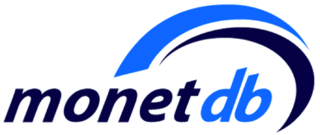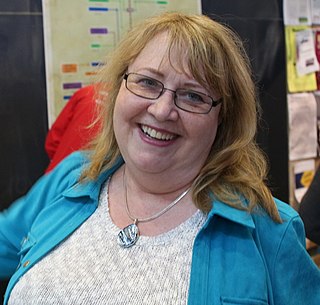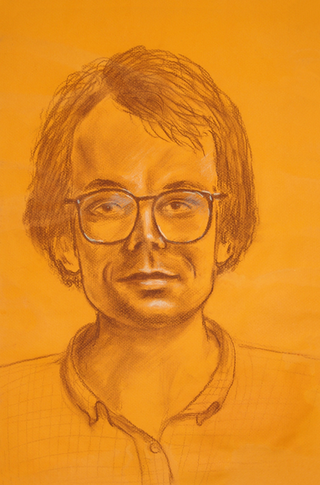NonStop SQL is a commercial relational database management system that is designed for fault tolerance and scalability, currently offered by Hewlett Packard Enterprise. The latest version is SQL/MX 3.4.

The database schema is the structure of a database described in a formal language supported typically by a relational database management system (RDBMS). The term "schema" refers to the organization of data as a blueprint of how the database is constructed. The formal definition of a database schema is a set of formulas (sentences) called integrity constraints imposed on a database. These integrity constraints ensure compatibility between parts of the schema. All constraints are expressible in the same language. A database can be considered a structure in realization of the database language. The states of a created conceptual schema are transformed into an explicit mapping, the database schema. This describes how real-world entities are modeled in the database.
Datalog is a declarative logic programming language. While it is syntactically a subset of Prolog, Datalog generally uses a bottom-up rather than top-down evaluation model. This difference yields significantly different behavior and properties from Prolog. It is often used as a query language for deductive databases. Datalog has been applied to problems in data integration, networking, program analysis, and more.

MonetDB is an open-source column-oriented relational database management system (RDBMS) originally developed at the Centrum Wiskunde & Informatica (CWI) in the Netherlands. It is designed to provide high performance on complex queries against large databases, such as combining tables with hundreds of columns and millions of rows. MonetDB has been applied in high-performance applications for online analytical processing, data mining, geographic information system (GIS), Resource Description Framework (RDF), text retrieval and sequence alignment processing.
Replication in computing involves sharing information so as to ensure consistency between redundant resources, such as software or hardware components, to improve reliability, fault-tolerance, or accessibility.
M. Dale Skeen is an American computer scientist. He specializes in designing and implementing large-scale computing systems, distributed computing and database management systems.
A fundamental problem in distributed computing and multi-agent systems is to achieve overall system reliability in the presence of a number of faulty processes. This often requires coordinating processes to reach consensus, or agree on some data value that is needed during computation. Example applications of consensus include agreeing on what transactions to commit to a database in which order, state machine replication, and atomic broadcasts. Real-world applications often requiring consensus include cloud computing, clock synchronization, PageRank, opinion formation, smart power grids, state estimation, control of UAVs, load balancing, blockchain, and others.

Serge Joseph Abiteboul is a French computer scientist working in the areas of data management, database theory, and finite model theory.

Patricia G. Selinger is an American computer scientist and IBM Fellow, best known for her work on relational database management systems.
In computer science, streaming algorithms are algorithms for processing data streams in which the input is presented as a sequence of items and can be examined in only a few passes, typically just one. These algorithms are designed to operate with limited memory, generally logarithmic in the size of the stream and/or in the maximum value in the stream, and may also have limited processing time per item.

Michael Ralph Stonebraker is a computer scientist specializing in database systems. Through a series of academic prototypes and commercial startups, Stonebraker's research and products are central to many relational databases. He is also the founder of many database companies, including Ingres Corporation, Illustra, Paradigm4, StreamBase Systems, Tamr, Vertica and VoltDB, and served as chief technical officer of Informix. For his contributions to database research, Stonebraker received the 2014 Turing Award, often described as "the Nobel Prize for computing."

Tomasz Imieliński is a Polish-American computer scientist, most known in the areas of data mining, mobile computing, data extraction, and search engine technology. He is currently a professor of computer science at Rutgers University in New Jersey, United States.
Dataspaces are an abstraction in data management that aim to overcome some of the problems encountered in data integration system. The aim is to reduce the effort required to set up a data integration system by relying on existing matching and mapping generation techniques, and to improve the system in "pay-as-you-go" fashion as it is used. Labor-intensive aspects of data integration are postponed until they are absolutely needed.
Patrick Eugene O'Neil was an American computer scientist, an expert on databases, and a professor of computer science at the University of Massachusetts Boston.
In relational database theory, a tuple-generating dependency (TGD) is a certain kind of constraint on a relational database. It is a subclass of the class of embedded dependencies (EDs).
In database theory, Imieliński–Lipski algebra is an extension of relational algebra onto tables with different types of null values. It is used to operate on relations with incomplete information.

Witold Lipski Jr. was a Polish computer scientist, and an author of two books: Combinatorics for Programmers and (jointly with Wiktor Marek Combinatorial analysis. Lipski, jointly with his PhD student, Tomasz Imieliński, created foundations of the theory of incomplete information in relational databases.
GQL is a proposed standard graph query language. In September 2019 a proposal for a project to create a new standard graph query language was approved by a vote of national standards bodies which are members of ISO/IEC Joint Technical Committee 1(ISO/IEC JTC 1). JTC 1 is responsible for international Information Technology standards. GQL is intended to be a declarative database query language, like SQL.
Daniel Abadi is the Darnell-Kanal Professor of Computer Science at University of Maryland, College Park. His primary area of research is database systems, with contributions to stream databases, distributed databases, graph databases, and column-store databases. He helped create C-Store, a column-oriented database, and HadoopDB, a hybrid of relational databases and Hadoop. Both database systems were commercialized by companies.
In database theory, the query evaluation problem is the problem of determining the answers to a query on a database. Research in database theory aims at determining the computational complexity of answering different kinds of queries over databases, in particular over relational databases.






